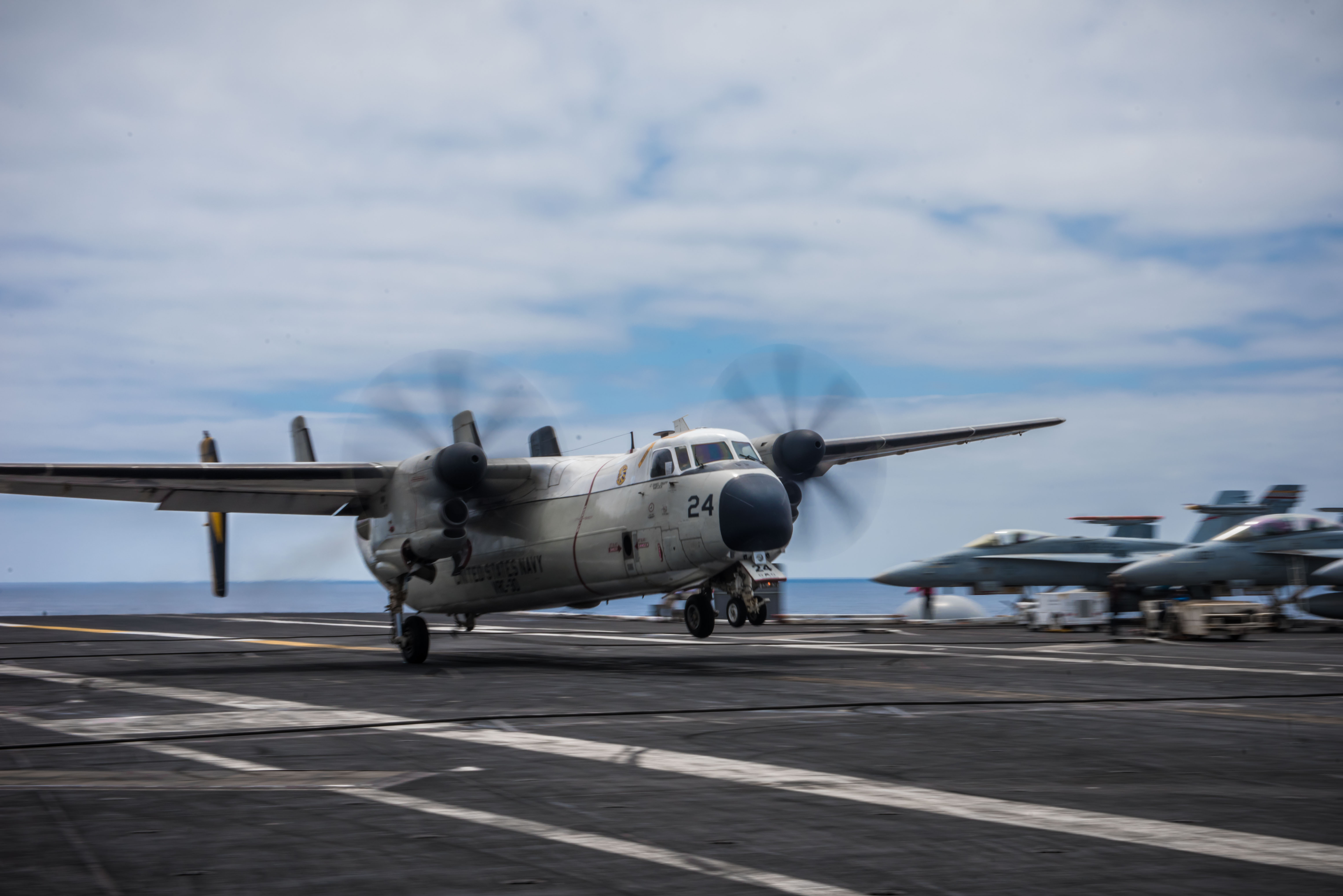
The U.S. Navy and Japanese forces have ended the search for three sailors missing after the Wednesday crash of a C-2A Greyhound cargo aircraft in the Philippine Sea, U.S. 7th Fleet announced on Friday. The three missing sailors are now presumed dead.
“USS Ronald Reagan (CVN-76) led the combined search and rescue efforts with units from the Japan Maritime Self-Defense Force (JMSDF),” read a statement from U.S. 7th Fleet.
“During the course of two days, eight U.S. Navy and [Japanese Maritime Self Defense Force] ships, three helicopter squadrons and maritime patrol aircraft covered nearly 1000 square nautical miles in the search for the missing sailors.”
Eight sailors aboard the C-2A were rescued and flown to Reagan following the crash. The Greyhound was assigned “Providers” of Fleet Logistics Support Squadron (VRC) 30, Detachment Five, forward deployed at Naval Air Facility Atsugi, Japan.
“Our thoughts and prayers are with our lost shipmates and their families,” Rear Adm. Marc Dalton, Commander, Task Force 70, said in a statement.
“As difficult as this is, we are thankful for the rapid and effective response that led to the rescue of eight of our shipmates, and I appreciate the professionalism and dedication shown by all who participated in the search efforts.”
The Navy is withholding the names of the three sailors pending the completion of next of kin notification. An investigation into the cause of the crash is ongoing.
A detachment of C-2s, some of the oldest planes in the Navy, accompany carrier strike groups as they travel throughout a deployment. They follow the strike group as it moves and ferry mail and passengers too and from the carrier at distances out of the range of a strike group’s helicopters.
The more than 50-year-old Greyhound design is set to be replaced by a variant of the V-22 Osprey tilt-rotor aircraft in the early 2020s.
The following is the complete Nov. 24, 2017 statement from U.S. 7th Fleet.
USS Ronald Reagan (CVN 76) led the combined search and rescue efforts with units from the Japan Maritime Self-Defense Force (JMSDF). During the course of two days, eight U.S. Navy and JMSDF ships, three helicopter squadrons and maritime patrol aircraft covered nearly 1000 square nautical miles in the search for the missing sailors.
Eight Sailors were immediately recovered from the crash and transferred to Ronald Reagan for medical evaluation. All are in good condition at this time.
“Our thoughts and prayers are with our lost shipmates and their families,” said Rear Adm. Marc Dalton, Commander, Task Force 70. “As difficult as this is, we are thankful for the rapid and effective response that led to the rescue of eight of our shipmates, and I appreciate the professionalism and dedication shown by all who participated in the search efforts.”
The Sailors names are being withheld pending completion of next of kin notifications.
The following ships and aircraft are searching the area: U.S. Navy guided-missile destroyers USS Stethem (DDG 63), USS Chafee (DDG 90) and USS Mustin (DDG 89); the “Golden Falcons,” MH-60S Seahawk helicopters from U.S. Navy Helicopter Sea Combat Squadron (HSC) 12; the “Saberhawks,” MH-60R Seahawk helicopters from U.S. Navy Helicopter Maritime Strike Squadron (HSM 77) and “Warlords” of HSM 51; P-8 aircraft from the “Fighting Tigers” of U.S. Navy Maritime Patrol and Reconnaissance Squadron (VP) 8; P-3 Orion aircraft of the “Red Hook” U.S. Navy Maritime Patrol and Reconnaissance Squadron (VP) 40; JMSDF Helicopter Carrier Japan Ships (JS) Kaga (DDH 184) and JS Ise (DDH 182); JMSDF Akizuki-class destroyer JS Teruzuki (DD 116); JMSDF Murasame-class destroyer JS Samidare (DD 106), and JMSDF Hatakaze-class destroyer JS Shimakaze (DDG 172).
An investigation is currently underway.





